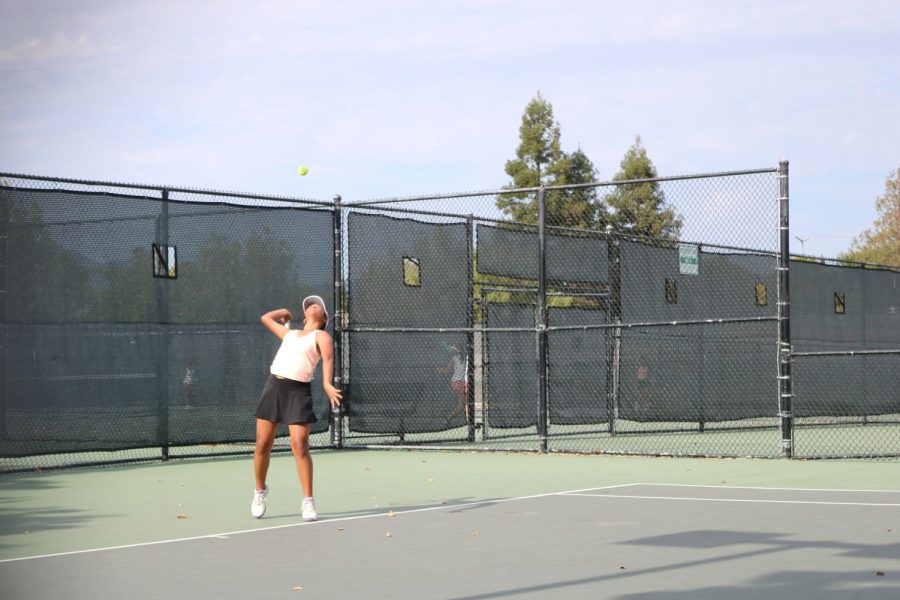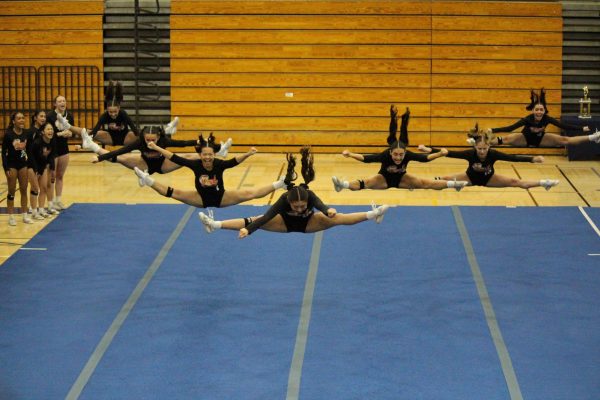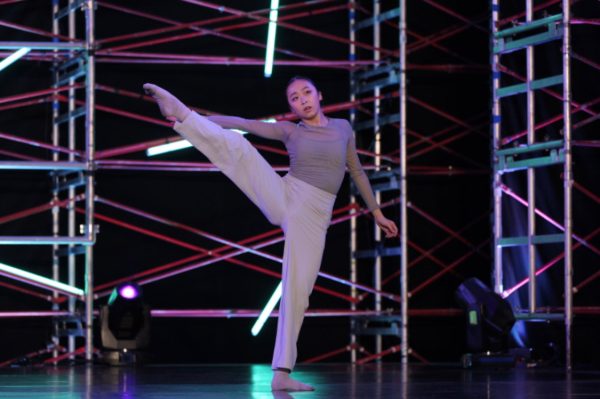Is being a student-athlete worth it? – NO
Photo courtesy of Dannika Shah
Sophomore Gracie Barco serves the ball during a varsity women’s tennis match last season.
High school sports can be some of the most physically and mentally demanding activities.
As many students know, participating in school sports allow them to exercise while helping build students’ leadership skills and create beneficial bonds with teammates.
But those might be the only benefits of being a student-athlete. The cons outweigh the pros as the most significant sacrifice students make for school sports is time and with that, grades.
The first few weeks of a semester are crucial for students to adapt to all their classes. With fall sports starting as soon as students set foot on campus the first day of school, those beginning weeks are snatched from students as there is no time to adjust to the new school year. Similarly, winter sports fall during the first semester finals and spring sports start shortly after second semester begins.
All sports seasons inconveniently occur during critical times for students, resulting in difficulty balancing classes and thier athletic commitment.
Although practices are generally two to three hours after school up to five days a week, matches and games often go on for unpredictable hours that can disrupt students’ study schedules even more. Because of the hours that sports take up after school, students suffer the consequences of being awake at unhealthy hours to finish homework and study for tests.
As both of us are on the Cal High tennis team, we have had our fair share of student-athlete stress. For tennis, matches start around the first week of school so adjusting became difficult for us and many of our teammates. We’re dismissed from classes early to travel to away games, which was a big problem since the extra B period was moved to the end of the day.
Although we weren’t taking B period, many of our teammates were and had to sacrifice their education for tennis. As some options for B period were heavy academic classes, such as chemistry and math, our teammates frequently had to skip tests and important assignments in order to attend our matches.
Most of our matches last several hours, but during one specific match, one of us played a match that lasted until 9 p.m.
The tennis team has a rule that only seniors are allowed to leave before the entire match is finished, meaning the rest of the team had to stay and cheer for the last player until they finish.
Students who do not have any additional commitments outside of school already feel that there are not enough hours in the day to accommodate their schedules. Student-athletes, though, have to dedicate several hours after school to games, practice and team-building activities.
But many of our teammates had after school commitments which made the task of studying and finishing homework practically impossible. Many of our teammates had extracurricular classes after practice, which would give them no time to effectively study for upcoming assessments and only lead to sleepless nights.
During our time on Cal’s tennis team, we both found ourselves leaving matches when it was already pitch black outside. When we got home, all we had time for was a shower and dinner. Then it was straight to doing homework for the rest of the night.
We consistently went to bed past 3 a.m. every school night during the season. Every day was just an endless cycle of school, tennis, and homework. The stress many of our teammates felt was relentless.
It is nearly impossible for students to participate in a sport while trying to do their homework, spend time with families, and relax.
This means students need to choose which activities to prioritize, leading to extreme stress, poor grades, and often unhealthy habits.

Senior Hallie Chong is coming back for her third year with The Californian as the Online and Podcast Editor. She’s hoping to enjoy her last year by renovating...

Senior Anika Choudhary is returning for her third year in newspaper as an Online Editor and Podcast Editor. In her free time, she enjoys judging people’s...




